Healthy Living
Building healthier communities
January 24, 2012
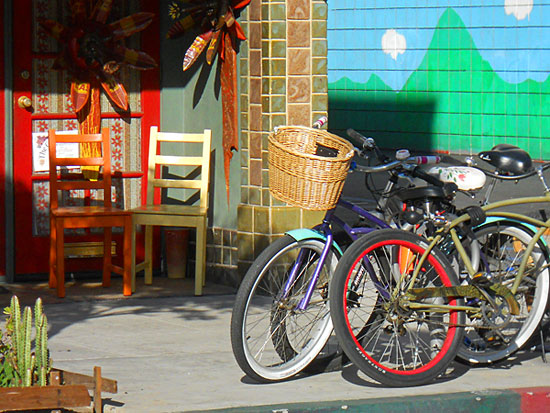
A new ordinance means bike parking must be a part of new developments in unincorporated L.A. County.
What does the width of your sidewalk have to do with the diameter of your waistline?
What do shade trees have to do with how active you are?
And what does bicycle parking have in common with farmers markets and community gardens?
They’re all elements in Los Angeles County’s new Healthy Design Ordinance, initially approved by the Board of Supervisors Tuesday, and now receiving finishing touches from county attorneys.
The ordinance, expected to become law in March, represents part of a new and increasingly important partnership between planners and public health officials trying to fight an epidemic of obesity, diabetes and other diseases by making it easier for people to adopt a more active lifestyle.
To the delight of bicycle advocates, the new ordinance would require for the first time that bike parking be included in new developments in unincorporated parts of Los Angeles County. (Similar provisions are included the county’s proposed Bicycle Master Plan, which is expected to come before the board in coming weeks.)
To foster more walkable communities, the Healthy Design Ordinance also would mandate 5-foot wide sidewalks instead of the current 4-foot standard. And, to make sure those wider sidewalks are inviting, it would require that shade trees be included in future development plans.
It also seeks to bring healthy vegetables and fruits to so-called food deserts by making it easier for farmers markets and community gardens to take root in residential and other areas without a lot of red tape. And written into the ordinance is a requirement that those markets accept CalFresh payments.
Dr. Jonathan E. Fielding, the county’s top public health official, said his department was happy to have invested part of a 2010 grant it received from the federal Centers for Disease Control and Prevention to help get the Healthy Design Ordinance off the ground.
It’s all part of a shift in tactics to move disease prevention out of the doctor’s office and into the streets.
“If we want to improve the health of Angelenos, we need to start by improving our physical environment and our social environment,” Fielding said.
Supervisors praised the work that has been done so far.
“This is a big idea. This is forward-looking. This is progressive policy-making,” said Supervisor Mark Ridley-Thomas.
Board of Supervisors Chairman Zev Yaroslavsky, who initially proposed the measure along with Supervisor Don Knabe, also saluted the efforts. But he said the new ordinance is just a first step toward designing a healthier county.
“Much more needs to be done to create livable neighborhoods that do not rely solely on automobile transportation,” Yaroslavsky said. “County planners and engineers, and private developers, will have to make a concerted effort to achieve neighborhoods where people feel comfortable walking, biking, and taking transit.”
In a motion adopted along with the board’s vote Tuesday in favor of approving the ordinance, Yaroslavsky directed county staff to take a closer look at “zoning and land use policies that encourage sprawling developments which force people to drive vast distances just to get to work, or buy a gallon of milk.”
At the same time, the motion recognized that there are no one-size-fits-all approaches, and that not all healthy design features will apply to every community.
A rethinking of what planning can mean to the health of communities and individuals is “actually pretty exciting,” said Susan Tae, a supervising regional planner who led the Healthy Design team for Regional Planning. “To create a more pleasant environment is to encourage a pedestrian to take a walking trip rather than jump in a car.”
(For a look at some of the guidelines the team came up with in developing the ordinance, click here. And a two-minute summary of the ordinance’s main points is here.)
Tae said other initiatives, such as the upcoming Bicycle Master Plan and a new specific plan to create a more walkable area around Gold Line stations on the 3rd Street Corridor inEast L.A., will help move the spirit of the new ordinance forward.
Designing for health, she said, requires thinking like a walker or cyclist and constantly asking: “How do we create things at more of a pedestrian scale?”
“If it’s not comfortable,” Tae said, “then it’s not going to be used.”
Posted 1/24/12
Some healthy plans that really pop
January 4, 2012
The new year is off and running in Los Angeles County—not to mention bicycling, walking and watching what it eats.
January, the traditional kickoff month for diets and self-improvement regimes of every kind, promises to bring some healthy developments of the public policy variety to Los Angeles County.
On January 11, the Regional Planning Commission is scheduled to vote on the county’s first updated bicycle master plan in more than three and a half decades. The plan is expected to expand the county’s network of bikeways and, by unanimous vote of the Board of Supervisors, also to include cutting-edge design proposals for making cycling safer and more enjoyable throughout the region.
Then, on January 24, the Board of Supervisors will take up a proposed Healthy Design Ordinance, aimed at turning car-centric, fast-food-eating Southern California into a more walkable, bikeable and garden-filled place.
Meanwhile at the Department of Public Health, this year’s anti-smoking and anti-obesity efforts will be rolled into the county’s new Choose Health L.A. campaign. Funded for the past two years by federal stimulus grants and now by health care reform funds, those projects have sought to improve health, not by targeting specific diseases, but by teaming up with cities, community groups and school districts to get at the root causes of chronic ailments such as heart disease and diabetes.
Last year’s successes included a wave of local smoking bans in cities throughout L.A. County and a provocative ad campaign underscoring the sugar content in soft drinks. The federal grant money has also helped lay the groundwork for the master bike plan and the Healthy Design Ordinance.
Next up: food stamps at farmers’ markets, a grassroots push for smoke-free apartment complexes, teamwork with city attorneys to enforce laws against cigarette sales to minors, and work with hospitals to make it easier for new mothers to breastfeed.
Paul Simon, who heads the Department of Public Health’s Division of Chronic Disease and Injury Prevention, says the initiatives are the fruit of an ongoing effort to create an infrastructure of good health in Greater Los Angeles.
“In many of our communities, people want to make healthier choices but have a hard time doing it,” says Simon. “Especially in lower income districts where people want to be physically active, but can’t bike or jog or go out without worrying about violence. Or where the landscape is dominated by these packaged food products jammed with calories. If you set out to design a community to get really high rates of obesity, the community you’d design wouldn’t be far from the communities we’re living in now.”
The Healthy Design Ordinance would mandate wider sidewalks and shadier landscaping in the county, increase bike parking, simplify permitting for community gardens and farmers’ markets and require thru-ways in dead-end cul-de-sacs so that pedestrians and bicyclists can more easily get to shopping, recreation areas and schools.
Though it would only apply to new construction and major renovations in unincorporated areas, its effects, like those of the bike plan, are expected to influence surrounding cities—and to create a healthier landscape for years to come.
Posted 1/4/12
Wood-burning fireplaces feel the heat
November 30, 2011
Chestnuts roasting on an open fire? Better check your woodpile and your air quality.
Amid concerns about agricultural pests and air pollution in Southern California, state and local authorities have been paying closer attention this year to wood-burning fireplaces, one the most fragrant, but environmentally vexing, aspects of winter in L.A.
For instance, the Southern California Air Quality Management District will begin issuing mandatory “no burn” advisories through the end of February on days in which fine particulates in the area exceed federal health standards. Though the advisories are expected to be rare, and first-time offenders can get off the hook by taking a smoke-awareness course, fireplace owners who repeatedly light fires on those days can be fined up to $500.
“Fine particulates are not only bad for the environment, but bad for our health,” says AQMD spokeswoman Tina Cherry. “They can lodge deep in your lungs and exacerbate lung conditions and asthma. So this year, on days when the fine particulate levels reach 35 micrograms per cubic meter, we’re asking people not to burn wood.”
State and agricultural authorities, meanwhile, have been urging residents with wood-burning fireplaces to “buy it where you burn it” when it comes to firewood because so many invasive insect pests and diseases are transported in woodpiles.
“Right now, there’s a quarantine in San Diego County because of a pest called the Goldspotted oak borer, which spreads via wood and is a real threat to oak trees,” says Frank McDonough, botanical information consultant at the Los Angeles County Arboretum & Botanic Garden.
“But you have to be careful even in areas without quarantines.”
The measures and warnings seek to wean Southern Californians from the wood fires that are such a tradition this time of year. To many, one of the coziest aspects of winter is the smell of a eucalyptus or oak log in the hearth, burning down to embers, but the fires that perfume winter nights with that smoky aroma also spew about 5.5 tons of particulate matter a day, on average, into the region’s air, according to the AQMD.
The new “no-burn” mandates are the latest in a set of measures aimed at controlling that pollution. Wood-burning fireplaces and stoves have been banned in new developments since 2009 in California, and voluntary no-burn days were initiated last year.
Although AQMD data has indicated that curtailment conditions can occur as often as 15 times in a typical winter, only one voluntary no-burn advisory was issued in 2010-11, and that was in February in the Riverside area, Cherry says.
This year’s mandatory no-burn laws will run from November 1 until February 29, and the AQMD will issue residential wood-burning advisories to let the public know whether particulate levels are elevated.
Residents can call a “Check Before You Burn” hotline at (866) 966-3293 to find out whether an advisory has been issued, or click here to sign up for an online notification. An interactive no-burn advisory map, which allows users to check for advisories by entering a ZIP code in the search area, is also available here.
Posted 11/30/11
Turkey Day damage control
November 22, 2011
Mmm. Turkey and stuffing, cranberries and sweet potatoes, pie and ice cream—few pleasures are as reliably delicious as Thanksgiving dinner, or as enduring: The basics alone will set you back thousands of calories.
Fortunately Los Angeles County has a bounty of public recreational options that can help offset the gluttony, many of them right here in the 3rd District. So as we load up our plates this week, let us also give thanks for the equally enduring pleasures of a Thanksgiving morning workout or a brisk walk after dinner. Here are some of our favorite menu additions for a healthy holiday:
Take a hike
It’s not an accident that a landmark in the Santa Monica Mountains is the headquarters for a health and fitness reality show. The hills and canyons of Los Angeles County have been an inspiration to millions, and the county’s trail system just keeps getting better. With the exception of a couple of small parcels, for instance, the 65-mile Backbone Trail is now almost entirely owned by the public, and the long-planned Coastal Slope Trail has passed several key milestones this year.
Enter the Fitness Zone
You don’t need to join a gym to improve your strength, flexibility or cardiovascular abilities. Thanks to the Trust for Public Land, outdoor gyms have been installed in the last four years in more than two dozen parks across the county, with durable, weather-resistant exercise equipment designed to let you get toned at no cost. Both El Cariso Park in Sylmar and Pan Pacific Park in Los Angeles now have Fitness Zones that are just waiting to help you whittle away that second helping of stuffing. (For a map of Fitness Zones, click here.)
Hit the bike trails
Better yet, ride over the river and through the woods on one of Southern California’s paved bike paths, some of which are world famous, after all. If you’re socially inclined, preface your dinner with one of the Thanksgiving bike rides that have been organized in places like Beverly Hills and Brentwood. With events like CicLAvia capturing the public imagination, pedal power has never been hipper than it is right now in L.A.
Step into liquid
You’ll probably need a wetsuit, but who in Los Angeles wouldn’t give thanks for our beaches? Even if you don’t like to surf in November, the Southern California coast offers endless fitness opportunities—for free. If you’re not a water baby, check out the Marvin Braude and Ballona Creek Bike Trails. Or make like Zev and take a beach run between Santa Monica and Marina del Rey before Thanksgiving dinner.
Pick up the pace
If you can walk, you can speed walk, or even jog a little. If you’re feeling really ambitious, maybe you want to sign up for one of this year’s “Turkey Trots” for runners in Burbank, Topanga and Van Nuys. More interested in proceeding at your own pace? Run the UCLA perimeter or shake a leg on one of the two jogging tracks at Van Nuys/Sherman Oaks Park. Out-of-town guests? Take the whole crew to the San Vicente median, jogging track to the stars (or, in any case, the almost-famous). It’s grassy, tree-lined, filled with beautiful people and easy to get to, and if you do the whole 6-mile loop from Ocean Avenue in Santa Monica to South Bundy Drive in Brentwood, it’ll knock about 600 calories from your intake. Or make room for extra pie.
Posted 11/22/11
Pushing for a better, bolder bike plan
November 17, 2011
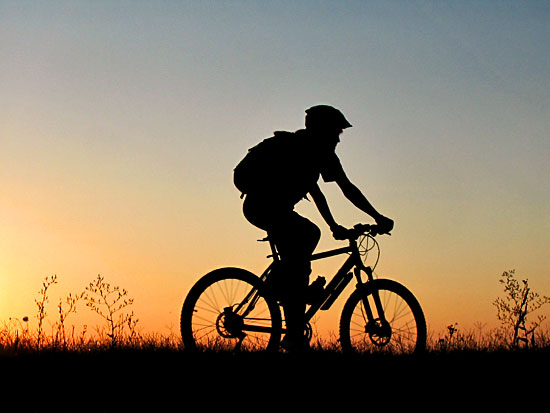
Los Angeles County's getting a new bike plan, and some think it should do more to attract new riders.
As Los Angeles County closes in on its first updated bicycle master plan in 36 years, cycling advocates this week urged planners to incorporate more ambitious and innovative approaches to making streets welcoming for bicyclists of all ages and abilities.
The plan as currently drafted would add 816 miles of new bikeways in unincorporated Los Angeles County over the next two decades, at a cost of $327.7 million. But critics say the plan relies too heavily on the lowest category of bike route—just signage, no dedicated lanes—and doesn’t embrace enough forward-thinking solutions for getting new riders to brave Los Angeles County’s streets.
“The plan before you…is basically straight out of the ‘70s,” said Eric Bruins, a USC cycling coach who was among those turning up on Wednesday to address the county’s Regional Planning Commission as it prepared to take up the plan, the county’s first since 1975.
Bruins told the commission to look no further than Long Beach for examples of cutting edge design, such as “cycle tracks” that separate bike lanes from automobile traffic with a row of parked cars.
“We’ve unnecessarily limited our toolbox, and the kinds of facilities that are missing from this toolbox are those that are going to actually increase ridership,” Bruins said.
Bruins also urged bike planners to take a page from another upcoming county initiative, the proposed Healthy Design Ordinance, to make sure that the best possible designs for cyclist and pedestrian safety are written into the plan.
The county’s plan, developed with the Department of Public Works acting as lead agency, requires approval from the Regional Planning Commission before it can move to the Board of Supervisors for final consideration.
Commissioners heard testimony Wednesday, but then voted to delay a decision until Jan. 11, 2012, to allow time for completion of the plan’s final environmental impact report.
The commissioners praised the work that has gone into the bike plan so far—and so did some of the speakers.
Alexis Lantz, planning and policy director for the Los Angeles County Bicycle Coalition, commended the county for its efforts and acknowledged the complexity of the job. But, she told the commission: “We feel there’s still work to be done to create a visionary bike plan that will truly serve our unincorporated communities for the next 20 years.”
Among other suggestions, she said the plan should give greater priority to improving cycling conditions in low-income communities and in areas with high obesity rates and significant concentrations of bicycle-related accidents.
The plan envisions adding several different kinds of bikeways to the county’s current 144-mile network. It proposes creating 70.6 miles of dedicated, car-free Class 1 bike paths. It also would add 265.9 miles of Class 2 bike lanes on streets with markings to delineate a place for bikes to ride.
And there would be 21.3 miles of “bicycle boulevards”—neighborhood streets with traffic-slowing measures in place to create better venues for cycling and walking.
Most of the new bikeways, however, would be Class 3 bicycle routes—shared roads with signs reminding drivers that cyclists are using the street but without specially designated lanes for bikes. Those would account for 458.6 miles of the 816 total miles proposed.
One speaker, Michele Chavez of the Antelope Valley High Desert Cyclists, told the commission that she was “very pleased” with the plan overall. But she said some of the proposed Class 3 routes are in areas where speeding motorists are common—and hazardous to people on bikes.
“I’m concerned that what will happen is that just a green sign will be put up that says ‘bike route’ and the cyclists will be no safer on these roads,” Chavez said, suggesting that two- to four-foot paved buffers be installed along the routes.
Sam Corbett, an Alta Planning + Design consultant who helped prepared the bike plan for the county, said the Class 3 routes should not be dismissed as unambitious.
“Class 3 facilities aren’t just all signage and stenciling,” he said. He said that 270 miles of the Class 3 routes would require road widening to increase the travel lanes to at least 14 feet in each direction to accommodate cyclists as well as cars.
Overall, Corbett said, the bike plan could help pave the way for a bicycle transformation in Los Angeles County similar to what’s happened during the past 15 years in Portland, Oregon.
“In 10 or 15 years, I think we can be where Portland is now,” Corbett said.
But some speakers, like Alice Strong of the West San Gabriel Valley Bicycle Coalition, said that’s too long to wait.
“I hope we don’t take 15 years to catch up with Portland. I’m sorry, but we should be leading,” Strong said. “We should be the innovators here.”
Strong said she would like to see many of the Class 3 routes upgraded to Class 2 lanes.
“We want to get more women cycling,” she said, “and we just don’t feel safe with just a little sign.”
Posted 11/17/11
Oct. 24 is Food Day—Bon Appetit!
October 20, 2011
 The sustainability movement has been around for some time now, but on October 24, it will reach a new milestone—its own holiday.
The sustainability movement has been around for some time now, but on October 24, it will reach a new milestone—its own holiday.
On Monday, America will celebrate the first annual Food Day with a cornucopia of events across the country intended to raise awareness of the importance of safe, affordable and healthy food, produced responsibly.
Sponsored by the Center for Science in the Public Interest with no corporate or governmental funding, the event is modeled on Earth Day, and is being guided by an advisory board that includes Los Angeles County Director of Public Health Jonathan E. Fielding, restaurateur Alice Waters, author Michael Pollan, preventive medicine expert Dr. Dean Ornish and a number of other esteemed activists, politicians and physicians.
L.A.-area events range from a weekend fruit pick in Granada Hills and a Westwood screening sponsored by the UCLA Maternal and Child Nutrition Leadership Training Program to a fundraising luncheon in Downtown Los Angeles sponsored by the California Center for Public Health Advocacy.
Click here for a more complete listing of Food Day events in Southern California and here for some great ideas for getting involved in the celebration.
And if you just want to celebrate with some delicious and healthy meals courtesy of celebrity chefs from around the country, click here for some great Food Day recipes.
Posted 10/20/11
Hike, bike and be merry
July 20, 2011
If Carmageddon taught Los Angeles one thing, it’s that maybe we aren’t as dependent on our vehicles as we thought. By some accounts, traffic on the Westside was lighter than any time since the 1984 Olympics. Large numbers of residents heeded officials’ warnings and spent the weekend away from their cars–a healthy behavior that doesn’t have to change now that we’re back to normal again.
With the help of some online resources, we can convert our Carmageddon memories into a few new habits. Take, for example, one of the weekend’s most talked-about lessons: the story of how the bikes won.
Last weekend, in a highly publicized race, a team of cyclists made a trip from Long Beach to Burbank faster than the passengers of a Jet Blue airplane. Join them and other L.A. cyclists by participating in some of the many local organized cycling activities.
The Los Angeles County Bicycle Coalition lists the major cycling events, and other sites like bikeboom.com list daily events on a local level. You can participate in CicLAvia, go off-road with the mountain biking crowd, or learn to do your own bike maintenance. More and more Southern Californians are realizing the potential of pedal power, and with a new L.A. County Bicycle Master Plan in the works, the region is only becoming more open to cycling.
Meanwhile, there’s the corollary to the bike lesson: Another racer came in a close second simply by using Metro and traveling on foot.
Take your own stroll with the Los Angeles Conservancy, which organizes docent-led walking tours focusing on the history and architecture of the best parts of the city. Self-led and commercial tours also can be found in places like Hollywood and the Miracle Mile, where walkers can visit the Petersen Automotive Museum, the Los Angeles County Museum of Art, the Page Museum, and the Craft and Folk Art Museum—all in a single outing. L.A. is famous for some of the fairest weather in the country, so almost any time of year is good for a walk.
If the hustle and bustle of the city isn’t your thing, there are peaceful trails and parklands all over the county to hike, bike, or even explore on horseback. Take a guided nature trek, learn to track wildlife, see how area Native Americans lived, or roast the perfect marshmallow at a family campfire evening. Check out the Santa Monica Mountains Conservancy’s website for full listings of outdoor events and educational programs.
“We hope the public will come out and enjoy the many activities and programs our parks have to offer in the Santa Monica Mountains,” said Joseph T. Edmiston, the conservancy’s executive director.
Don’t wait for Carmageddon II to enjoy its benefits!
Posted 7/20/11
Sowing the seeds of smart gardening
March 9, 2011
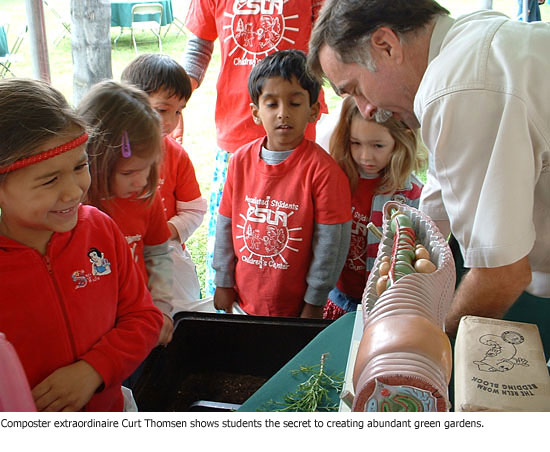 For a dozen years, Curtis Thomsen has crisscrossed Los Angeles County, preaching the gospel of gardening.
For a dozen years, Curtis Thomsen has crisscrossed Los Angeles County, preaching the gospel of gardening.
Don’t throw away yard waste, he exhorts. Composting can reduce water consumption by up to 50% per household. And don’t forget the lowly earthworm.
“Worm tea is the strongest organic fertilizer there is,” he likes to say.
Thomsen, an environmental consultant and master gardener based in Cerritos, has conducted the Countywide Smart Gardening initiative for the Los Angeles County Department of Public Works since 1998. Launched 20 years ago as a way to reduce the amount of yard waste being sent to landfills, the program has grown to encompass not only green-waste recycling, but a range of assistance on the creation and maintenance of sustainable landscapes.
The county now operates nine demonstration and learning centers where visitors can learn—for free—about sustainable agriculture, native plants, water conservation and organic gardening. As a bonus, Thomsen’s weekend workshops offer subsidized compost and worm bins for $40 and $65, respectively—a healthy 60% discount.
Countywide Smart Gardening information stands have been installed in parks, schools, community gardens and nature centers. The program’s experts will make presentations at the L.A. County Fair in September and host a booth at the Natural History Museum next month as part of its “Sustainable Sundays” program on “edible landscapes.”
Public Works’ Smart Gardening Program Manager David Perez says the program has educated thousands of Southern Californians, who have been increasingly driven toward home gardening by concerns about the environment and sustainability.
“We do free workshops where the public can learn about composting, where they can see native plants and native gardens, where they can get a feel for the process,” says Perez. And one of the most popular features (besides the discounted composting apparatus) is Thomsen’s no-cost advice.
“I come from an agricultural background—we’ve done composting since I was about 5,” says Thomsen, who was born in San Gabriel and raised on farms in Oregon and Idaho. Thomsen earned bachelors degrees at Oregon State in business administration and statistics, with a special emphasis in agriculture.
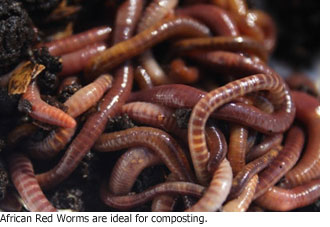 He returned to Southern California in the early 1990s to get his certifications in solid and hazardous waste management at UCLA, just as municipalities were working to comply with a then-new law requiring cities and counties to halve the waste they were sending to landfills. Thomsen and his brother, Keith, who holds a Ph.D. from UCLA in environmental science, began working with engineering consultants to help local governments set up composting facilities and recycling programs before the law’s 2000 deadline.
He returned to Southern California in the early 1990s to get his certifications in solid and hazardous waste management at UCLA, just as municipalities were working to comply with a then-new law requiring cities and counties to halve the waste they were sending to landfills. Thomsen and his brother, Keith, who holds a Ph.D. from UCLA in environmental science, began working with engineering consultants to help local governments set up composting facilities and recycling programs before the law’s 2000 deadline.
That expertise, he says, led to the creation of their own environmental consulting firm, BioContractors, Inc., through which Thomsen—with contract oversight from Public Works’ Perez—now runs Countywide Smart Gardening. Thomsen and his crew do 50 workshops a year at the learning centers, plus another 35 or so hosted offsite presentations that are co-sponsored by church groups, nonprofits and other municipalities. Spring is crunch time; between Earth Day observations and demand for spring planting information, his calendar is typically booked solid.
“Right now we’re at 31 events scheduled for April alone,” he says.
“The big push we like to do is vermi-composting because it has so much benefit to the environment,” Thomsen says. That’s composting with worms. Thomsen’s favorites are Eisenia fetida (also known as African Red Worms or Red Wigglers). Bred to thrive in the debris layer of jungle topsoil, they can process massive amounts of organic matter quickly, eating and excreting 80% to 100% of their body weight each day in food waste.
Besides aerating the soil, Thomsen says, they produce manure, or castings, that can be mixed with potting soil to create a high-nitrogen bioactive fertilizer. And, he says, the liquid from those castings—a substance called ‘worm tea’—can be diluted to create a systemic fertilizer, or used straight to kill gnats, aphids, white flies and most weeds.
Thomsen tells his audiences that even regular backyard composting can dramatically improve their garden yield—and make a crucial environmental difference. “The average person in L.A. County generates about a ton of garbage a year,” he says. “Forty percent of that is compostable.”
That’s 800 pounds of table scraps and grass clippings per year per person that could and should be fertilizing yards in L.A. County, “instead of going into a landfill.”
Is composting smelly? “No,” he says. “If you do it right, there should be no odor.”
Is it time-consuming? “No. About three minutes to put the bag of material in the bin and stir. You add water on a weekly basis.”
Does he compost at his house?
Here he laughs. Turns out Thomsen used to, but his current landlords, in Bellflower, are—for now—non-believers in his gospel.
“They won’t let me put in a composter, so I take all my stuff to the office. I have four worm bins there.”
Here is a video introduction to Backyard Composting, brought to you by L.A. County’s Countywide Smart Gardening program.

Posted 3/9/11
Vet squad learning new tricks
February 9, 2011
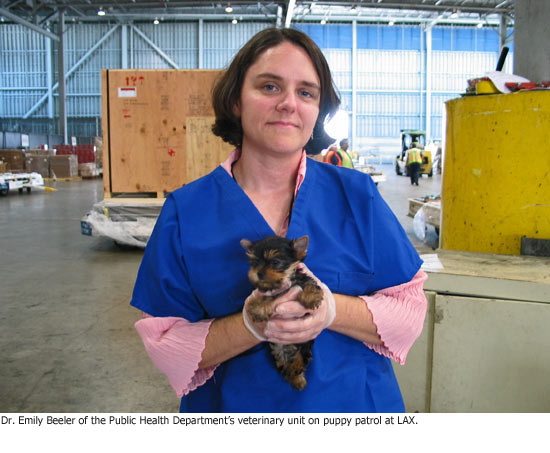 If it’s a jungle out there, Dr. Karen Ehnert and her staff are L.A. County’s safari guides.
If it’s a jungle out there, Dr. Karen Ehnert and her staff are L.A. County’s safari guides.
They know where the dogs are biting, where the rabid bats are hanging and where the raccoons have distemper.
They can tell when unscrupulous dog importers are bringing in underage puppies with bogus paperwork claiming vaccinations that never happened.
And, increasingly, they can see how the well-being of humans and animals is interrelated—for better or worse.
The multifaceted mission of the Department of Public Health’s little-known veterinary unit is testament to how times have changed for animals and humans alike in Los Angeles.
“Now that animals are becoming members of the family, sleeping in people’s beds, we need to create ways to help people improve their pets’ health, and improve their own health, too,” says Ehnert, 50, a UC Davis-trained veterinarian who’s been acting director of the unit since June. “There’s an incredible human-animal bond.” Walking and exercising family pets outdoors can also play a broader social role in the county, helping people “take back their communities,” she says. “There’s a huge public health benefit.”
The vet squad dates from a time when hoof-and-mouth outbreaks were bigger news than Hollywood gossip, and people thought of anthrax as a cattle disease, not a terrorist weapon.
A history of the department, written by Dr. Patrick Ryan, who retired last year, is full of fascinating and sometimes gruesome tidbits chronicling L.A.’s bygone livestock quarantines, tuberculosis-tainted dairy herds, disease-ridden slaughterhouses, garbage-swilling hogs and, during the Depression, roving rabid dogs attacking horses and cattle.
Well, L.A.’s no cow town anymore. And Ehnert and her unit are evolving to serve a metropolis in which people outnumber livestock, and canine rabies has long been wiped out, thanks to widespread vaccination programs. The last time a Los Angeles dog was reported to have had rabies was in 1962.
A primary mission of the team these days is still rabies control, but the culprits now are very different, with bats the likeliest to be infected, followed by skunks and foxes. This “Rabies Tales” comic, created by one of the department’s veterinarians, Dr. Emily Beeler, gives a good overview of how to handle exposure to a potentially rabid bat. (It also provides the welcome news that rabies shots are not given in the abdomen anymore.)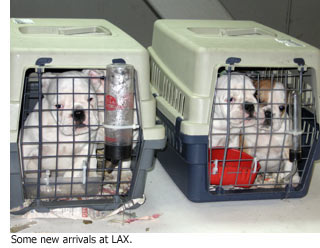
The unit takes reports on virtually every animal bite that comes to the attention of medical or law enforcement authorities in the county. It currently is working on a community-by-community analysis of where dog bites are most prevalent.
And it has an educational role, communicating with veterinarians in practice throughout the county and with the public at large about disease outbreaks and protective measures, including the importance of regular vaccinations to prevent many pet illnesses.
Lately, it’s been using the department’s Twitter feed to spread the word about how healthy human habits can lead to healthier pets. One recent Tweet focused on how smoking hurts pets.
It’s also preparing an online “Pet Health and Safety Quiz,” modeled on the department’s Food Safety Quiz (in which home cooks can test their food preparation savvy against the department’s standards for restaurant inspection and grading.)
What’s more, the vet squad has been a key player in a multi-jurisdictional effort called the “Border Puppy Task Force,” aimed at stopping the importation of sick and unvaccinated puppies through Los Angeles International Airport.
Ehnert said her team’s spot checks at the airport as part of that effort found that 40% of the large shipments of puppies coming through had falsified paperwork. The phony documents would claim, for instance, that the incoming dogs were four months old and had been vaccinated when in fact they were less than 8 weeks old—too young to have teeth, let alone effective vaccinations. In recent years, popular imported breeds coming through LAX have included English and French bulldog puppies from Colombia.
The vet squad currently is working on a proposal to turn its spot checks into a more regular monitoring arrangement, working in tandem with federal officials stationed at the airport.
The unit has undergone its share of changes over the years. Its lab was closed due to budget cuts in the mid-1990s. Its veterinary staff was shifted for a time to the Department of Animal Care & Control but later rejoined public health. Now budget cuts may once again affect the unit, which has 4 licensed vets and a registered veterinary technician among its 19 budgeted positions. Ehnert says seven of those slots are currently vacant due to retirements and leaves of absence.
The budget uncertainty hasn’t stopped the vet squad from looking ahead.
Ehnert is proposing a “2020 Healthy Pets, Healthy Families” initiative that would bring together veterinary educators, local vets, animal control agencies and public health officials with the goal of producing new standards for pet health by the year 2020. “Healthy pets can lead to healthy people,” Ehnert says in her proposal for the effort, intended as a pet-centric offshoot of the federal government’s Healthy People 2020 initiative.
“The idea is to create a model for the nation,” Ehnert says. “Nobody’s really talking about animal health and galvanizing the community.”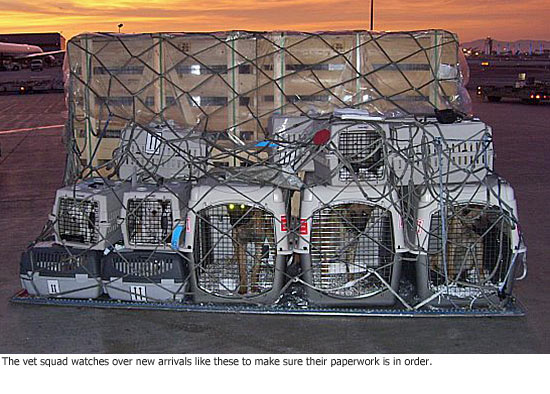
Posted 2/8/11




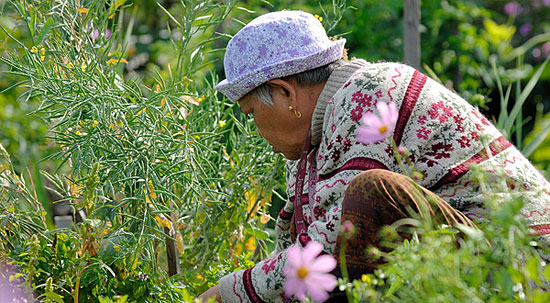


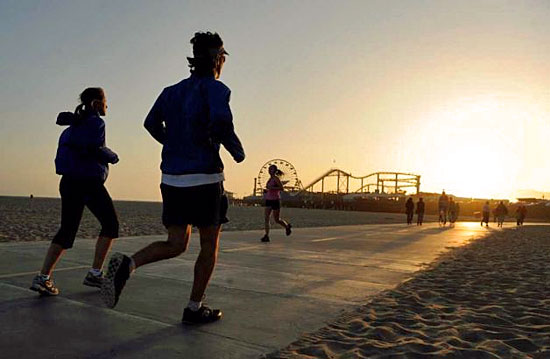
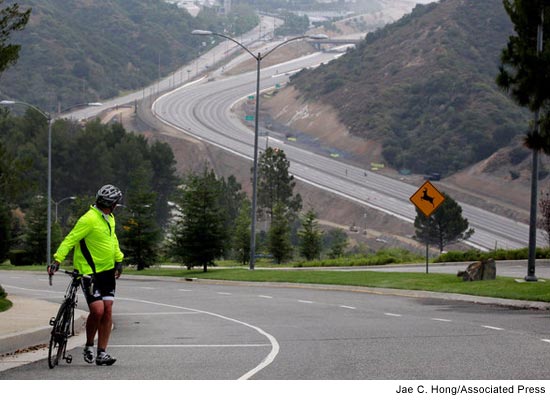







 405 bridge work causes a stink
405 bridge work causes a stink
